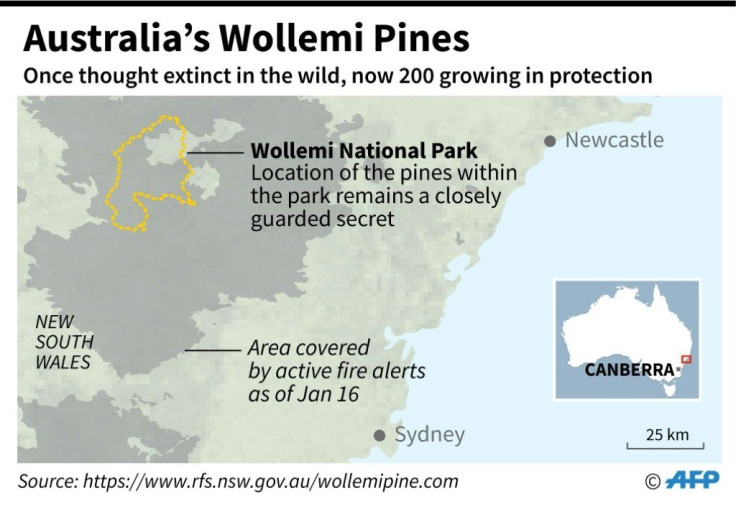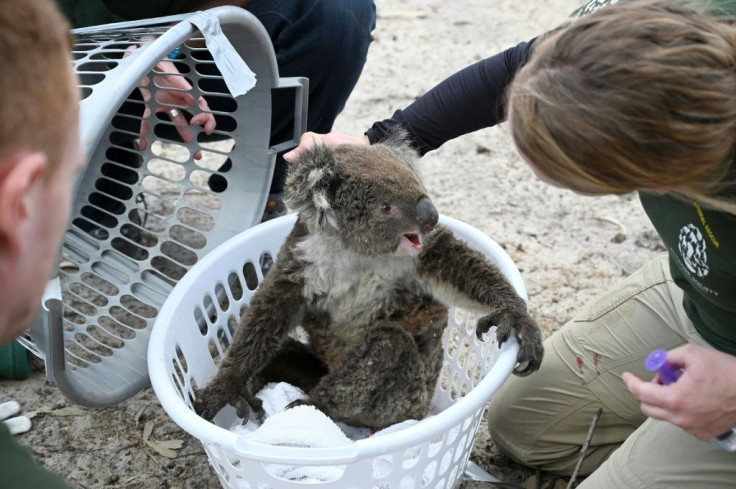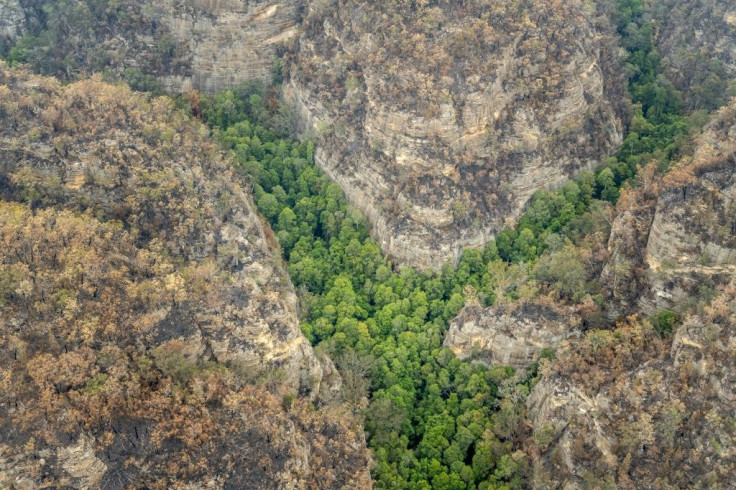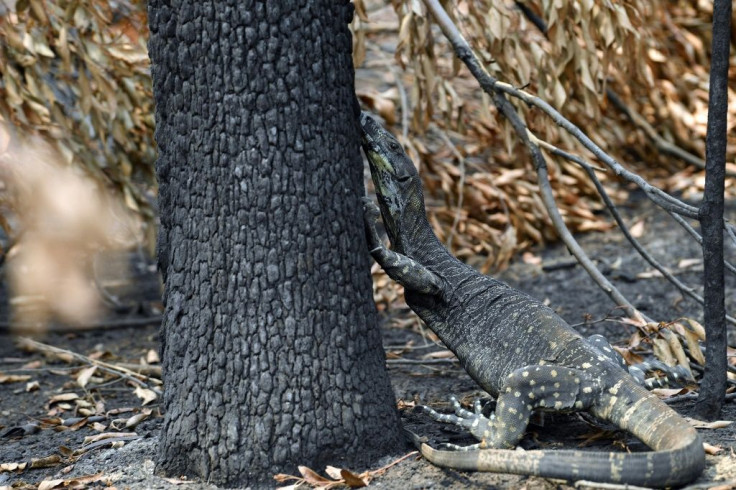Australia Fires 'Devastating Habitats' Of Endangered Species

Australia's bushfires and other climate change effects are devastating the habitats of critically endangered species and driving the native platypus towards extinction, according to surveys highlighting the country's vulnerability to rising temperatures.
The unprecedented blazes that have swept through an area the size of Portugal have claimed 29 lives but also tested Australia's rich and often unique wildlife, with experts warning up to one billion creatures may have perished in the inferno.
Even animals that survive the flames may take years to recover and experts have cautioned it is too early to assess the damage on the habitats of already endangered species.
The government's initial efforts to chart the impact showed the blazes had affected the habitats of 32 species defined as critically endangered -- those which face an extremely high risk of extinction in the wild.
These were mainly plant species, but the habitats of frogs, turtles and three types of birds were also hit, according to the preliminary list published on Monday by the Department of the Environment and Energy.

The survey showed 49 species had seen more than 80 percent of their known or likely habitat damaged in the fire zones. For a further 65 species, at least half of their habitat was affected.
But Sally Box, the Threatened Species Commissioner at the department, warned it was still too early to offer a definitive assessment.
"Some species are more vulnerable to fire than others and some areas were more severely burnt than others, so further analysis will be needed before we can fully assess the impact of the fires on the ground," she said.

Officials have warned that the effect of the fires, which have already burned for months, will be crippling for farmers, with the livestock toll exceeding 100,000 across Australia and the future difficult to predict.
Agronomist Daniel Pledge from Kangaroo Island off the coast of Adelaide in southern Australia has warned that the impact will stretch beyond the immediate agony of losing livestock to the flames.
In what he described to AFP as a "snowball effect", farmers will need to buy extra feed, re-seed burned paddocks and -- perhaps most worryingly -- the stress will make animals less likely to conceive, the expert said.

Farmers have already been battered by a prolonged drought, which is also pushing the unique platypus population towards becoming extinct, according to another study published on Monday.
The platypus, known for its duck-like bill, is already classed as "near threatened" and has vanished from up to 40 percent of its historical range on Australia's east coast due to drought, land clearing, pollution and dams.
But scientists from the University of New South Wales' Centre for Ecosystem Science said damage to river systems caused by years of little rainfall and high temperatures had worsened prospects for the animal.
Platypus numbers could fall up to 66 percent over the next 50 years. If projections about the accelerating rate of climate change are taken into account, this could rise to 73 percent.
The experts said there was an "urgent need" for a national risk assessment to decide whether to downgrade the platypus to "vulnerable" status and chart conservation steps to "minimise any risk of extinction".
In a rare piece of good news for Australia's charred landscape, it emerged last week that a secret operation by specialist firefighters had saved a group of prehistoric "dinosaur trees" from oblivion.
The Wollemi Pine, which grows up to 40 metres (130 feet) high, is believed to have existed since the Jurassic Period 200 million years ago but fewer than 200 remain.
As the fires approached, air tankers dropped fire retardant in a ring around the trees and firefighters were winched down to set up an irrigation system to protect the pines from encroaching flames.
Some of the trees were charred, but the unique grove survived.
"It's just been a phenomenal success story," said Matt Kean, environment minister for New South Wales state.
© Copyright AFP 2024. All rights reserved.





















